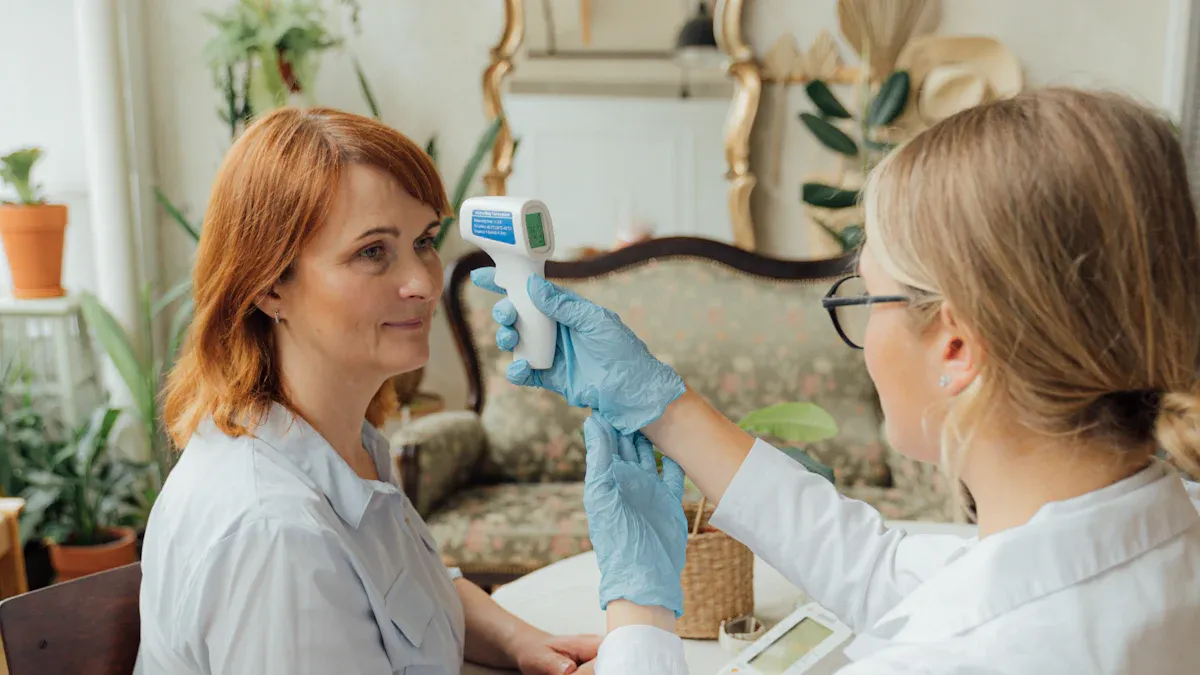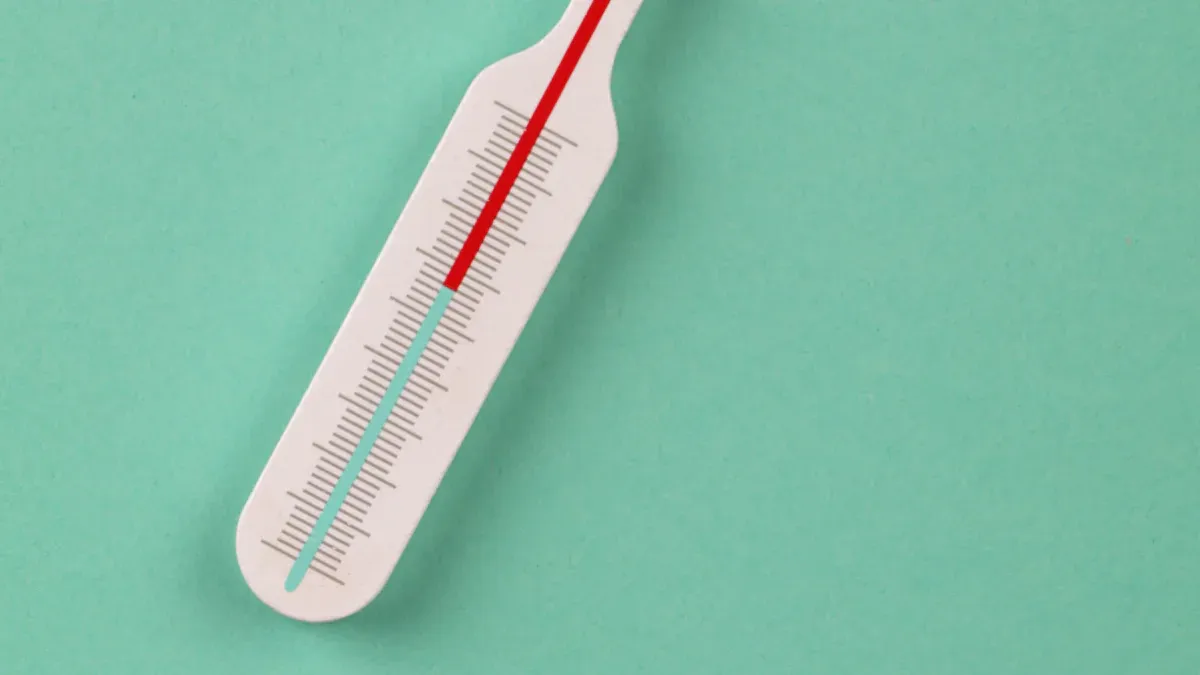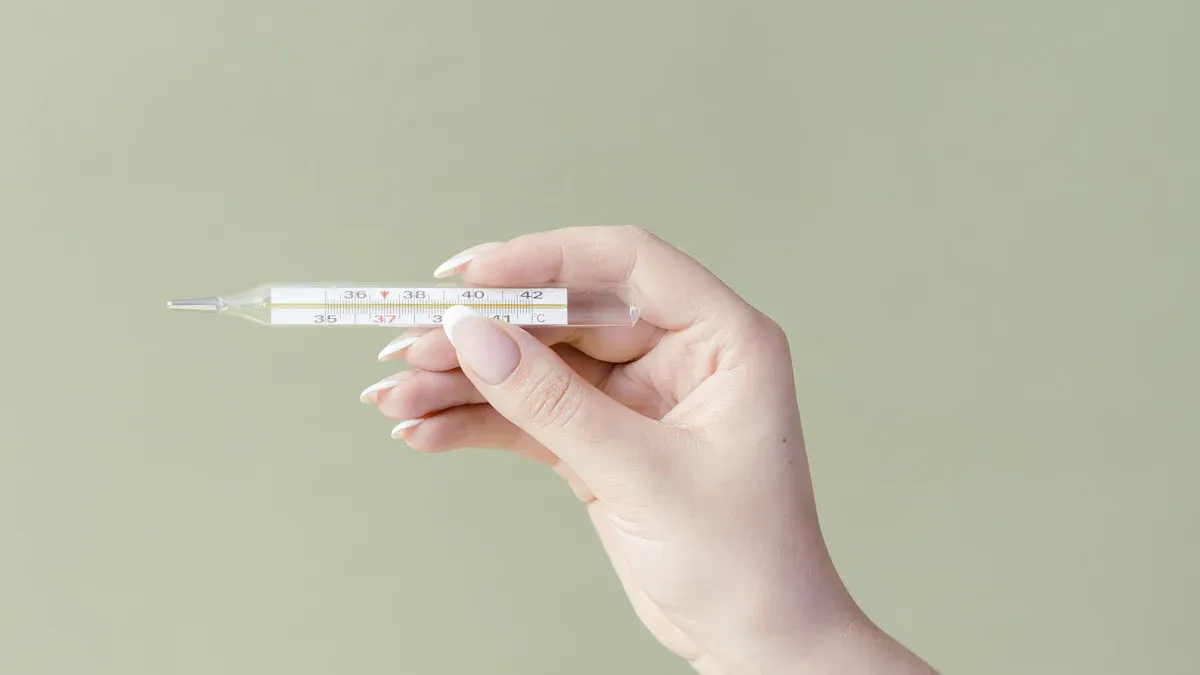How NiTi Cardiovascular Stents Are Made Today

NiTi cardiovascular stents help fix blood flow and save lives. Making them requires special methods for accuracy and strength. Advanced tools, like 3D printing, create NiTi cardiovascular stents with smart shapes. These shapes enhance their functionality within the body. Good precision contributes to improved blood flow and helps keep NiTi cardiovascular stents open longer. Over 75% of stents can experience issues like narrowing again, making quality manufacturing crucial. Tools like computer models assess how NiTi cardiovascular stents will perform. These innovative methods of producing stents make them safer and more effective for heart health.
Key Takeaways
NiTi stents help blood flow better and save lives. Their special making process ensures they are strong and precise.
Nitinol, the material for stents, is bendy and tough. It goes back to its shape, so it works well in arteries.
Lasers cut stents with great care. This makes sure stents fit right and work well in the body.
Finishing the surface makes stents safer. It lowers the chance of clots and can add medicine to stop arteries from narrowing.
Checking quality is very important when making stents. It makes sure stents are strong, safe, and follow health rules for patients.
Material Selection and Preparation
Why NiTi Is Used for Vascular Stents
Nitinol, a shape memory alloy, is great for stents. It works well inside the human body due to its properties. Nitinol can return to its shape after being bent. This helps stents expand properly in arteries. It is also very flexible, so it moves with blood vessels. Nitinol is strong and stretchy, making it perfect for heart health.
Properties of NiTi for Cardiovascular Applications
Nitinol has features that make it good for stents. It is biocompatible, so it won’t harm the body. This is important for long-term use in arteries. Nitinol resists rust, so it lasts a long time. Its flexibility and shape memory keep stents strong under blood flow. Compared to other materials, nitinol works better. For example, nitinol stents like Solitaire FR (0.38 N) and Trevo XP ProVue (0.91 N) are more flexible. This flexibility helps them handle the heart’s constant movement.
Stent Type | Flexibility (N) |
|---|---|
Solitaire FR | 0.38 ± 0.11 |
Stent D | 0.59 ± 0.05 |
Trevo XP ProVue | 0.91 ± 0.11 |
Preparing NiTi for Stent Manufacturing
Nitinol needs preparation before making stents. First, it is cleaned to remove harmful impurities. Then, it is shaped into thin tubes for stents. These tubes are treated to improve their shape memory. This ensures stents expand properly in arteries. Finally, the tubes are checked for quality. Good preparation is key to making stents that help heart health.
Manufacturing Processes

Laser Cutting for Stent Precision
Laser cutting is key to making accurate nitinol stents. High-powered lasers cut detailed designs into nitinol tubes. These designs help stents expand and support artery walls well. Laser cutting is very precise, ensuring stents fit perfectly in the body.
The accuracy of laser cutting is impressive. It can cut with precision of 10-20 microns. Tolerances are as tight as ±0.1 millimeters. This precision ensures stents work well, even in small arteries. The process also reduces waste, making it efficient.
Measurement Type | Precision Level |
|---|---|
Cutting Accuracy | 10-20 microns or smaller |
Consistent Operation | ±0.05 |
Achievable Tolerances | ±0.1 millimeters (0.004 inches) or less |
Heat Treatment for Shape Memory
Heat treatment gives nitinol stents their special shape memory. Nitinol tubes are heated to 400–500 °C during this step. This creates tiny particles, like Ti3Ni4, inside the material. These particles change nickel levels, raising the Ms temperature. This helps stents return to their shape after being squeezed, so they expand properly in arteries.
Heat treatment also makes stents stronger by fixing defects and reducing stress. This improves their durability, making them last longer in coronary arteries.
Surface Finishing for Biocompatibility
Surface finishing makes nitinol stents safe for the human body. This step polishes and coats the stents, removing impurities and smoothing the surface. A smooth surface lowers the chance of blood clots, helping blood flow better in arteries.
Coatings add drug-releasing layers to the stents. These layers slowly release medicine to stop arteries from narrowing again. Surface finishing not only makes stents safer but also helps them last longer, improving heart health for patients.
Advanced Techniques in Stent Manufacturing
CAD and Simulation in Stent Design
CAD and simulation tools help design better stents. CAD creates detailed stent models for a perfect artery fit. Simulations, like CFD, predict how blood flows through stents. This lowers the chance of arteries narrowing again.
Research shows CAD and simulations improve stent designs. For example, CFD models predict blood flow issues more accurately. FEM simulations give biomechanical data hard to get in labs. Patient-specific CAD models make stents more accurate for medical use.
Study | Findings |
|---|---|
Systematic review on CFD application | Changing stent shapes improves blood flow performance. |
Finite Element Method (FEM) | Provides biomechanical data for stent testing. |
Patient-specific CAD models | Improves accuracy for medical applications. |
Additive Manufacturing for Vascular Stents
3D printing, or additive manufacturing, is changing stent production. It builds stents layer by layer for complex designs. This method makes self-expanding stents with precise shapes for better artery performance.
One benefit is customizing stents for each patient. This ensures a better fit and fewer problems. It also reduces material waste, making it efficient. But challenges like biocompatibility and quality control remain.
Other methods, like μEDM and magnetron sputtering, also help. These techniques offer high precision and new design options.
Technique | Description | Advantages/Disadvantages |
|---|---|---|
Micro-electrical discharge machining (μEDM) | Makes stents from thin stainless-steel foil. | Strong and flexible for arteries. |
Magnetron sputtering | Combines with 3D photolithography for memory alloy stents. | High precision and good material properties. |
Coating Technologies for Drug-Eluting Stents
Coatings are key for drug-eluting stents. These stents release medicine to stop arteries from narrowing again. Coatings also make stents safer and reduce blood clot risks. For example, titanium-nitride-oxide coatings improve artery health in high-risk patients.
Studies show coating benefits. Titanium-nitride-oxide coatings work better than paclitaxel stents in tough cases. Iridium oxide coatings help arteries heal faster. But some coatings, like silicon carbide, show no big advantages over bare metal stents.
Coating Technology | In Vitro Results | Clinical Outcomes |
|---|---|---|
Titanium-nitride-oxide | Helps regulate artery health. | Better results than paclitaxel stents in hard cases. |
Iridium Oxide | Improves safety and healing in trials. | Needs more testing to confirm benefits. |
Silicon Carbide | Reduces blood cell sticking compared to steel stents. | No major benefits over steel stents after months. |
Drug-eluting stents use these coatings to work better and safer. These advancements improve outcomes for heart patients.
Quality Control and Testing

Mechanical Testing for Stent Durability
Mechanical testing checks if stents can handle tough conditions. These tests see how nitinol stents work under stress. Stress includes artery movement and blood pressure changes. Engineers test flexibility, strength, and resistance to wear.
One test squeezes and stretches the stent many times. This shows how it behaves in a coronary artery. It helps find weak spots and ensures the stent keeps its shape. Another test checks radial strength. This shows if the stent can stay open under pressure. These tests make sure stents are strong and last long in arteries.
Biocompatibility Testing for Safety
Biocompatibility testing makes sure stents are safe in the body. It checks that materials like nitinol don’t cause harm. Harm could include swelling or blood clots. Tests focus on how stents interact with blood and tissues.
For example, scientists test if stents cause blood clots in fake blood flow. They also study how the stent’s surface helps cells grow and heal. These tests ensure stents are safe and reduce risks during heart procedures.
Regulatory Compliance in Stent Manufacturing
Regulations are important for making safe stents. Different countries have rules for approving medical devices like stents. These rules make sure stents are safe and work well before use.
Groups like the FDA and EMA require strict testing. Tests include mechanical, safety, and clinical checks.
Key parts of these rules include:
Evidence Type | Description |
|---|---|
Methods Reporting | Explain methods, including how subjects are chosen. |
Results Reporting | Share results by site and patient groups. |
Accuracy Measures | Show test accuracy with confidence levels. |
Subject Accounting | Include all subjects and test outcomes. |
Intended Use Population Reporting | Share results for the specific group the stent is for. |
These rules ensure stents meet global safety standards. They help patients get better results. But different rules in countries can slow stent availability.
NiTi cardiovascular stents are improving heart health with new methods. These stents are precise, strong, and safe for the body. New ideas, like nanotechnology, help deliver medicine better. This lowers side effects and improves treatment results. For instance, nanostents stop blood vessels from narrowing by blocking muscle growth. Smart stents adjust to your body, offering personalized care and better outcomes.
Evidence Type | Details |
|---|---|
Clinical Success | Studies show 90% improvement in swallowing after stent use. This greatly boosts patients' quality of life. |
Cost Savings | Fewer problems and hospital visits save money over time. |
Regulatory Approval | Approved by the EMA after successful clinical trials. |
Ongoing progress in NiTi stent making is key for better medical tools. These improvements make heart treatments safer and more helpful for everyone.
FAQ
What makes NiTi stents special compared to others?
NiTi stents are made from a memory alloy. This lets them expand and fit your arteries well. They are more flexible and stronger than older materials. This makes them great for moving with blood vessels.
Are NiTi stents safe to use for a long time?
Yes, NiTi stents are safe for long-term use. They don’t rust and are gentle on the body. Special coatings make them even safer by lowering risks like blood clots. These features help them work well for years.
How do drug-eluting stents help?
Drug-eluting stents slowly release medicine into arteries. This stops tissue from growing and blocking the artery again. They give support and deliver medicine for better results.
Can NiTi stents be made for each person?
Yes, new methods like 3D printing can make custom stents. These stents match your arteries better. This improves how they work and lowers problems.
Why is quality control needed for stents?
Quality control checks that stents are safe and work well. Tests make sure they are strong, safe for the body, and meet rules. This ensures you get stents you can trust.
See Also
Nitinol Tubing's Impact on the Future of Medical Devices
The Manufacturing Process of Nitinol Tubing for Healthcare
Step-by-Step Guide to Manufacturing PTCA Balloon Catheters

